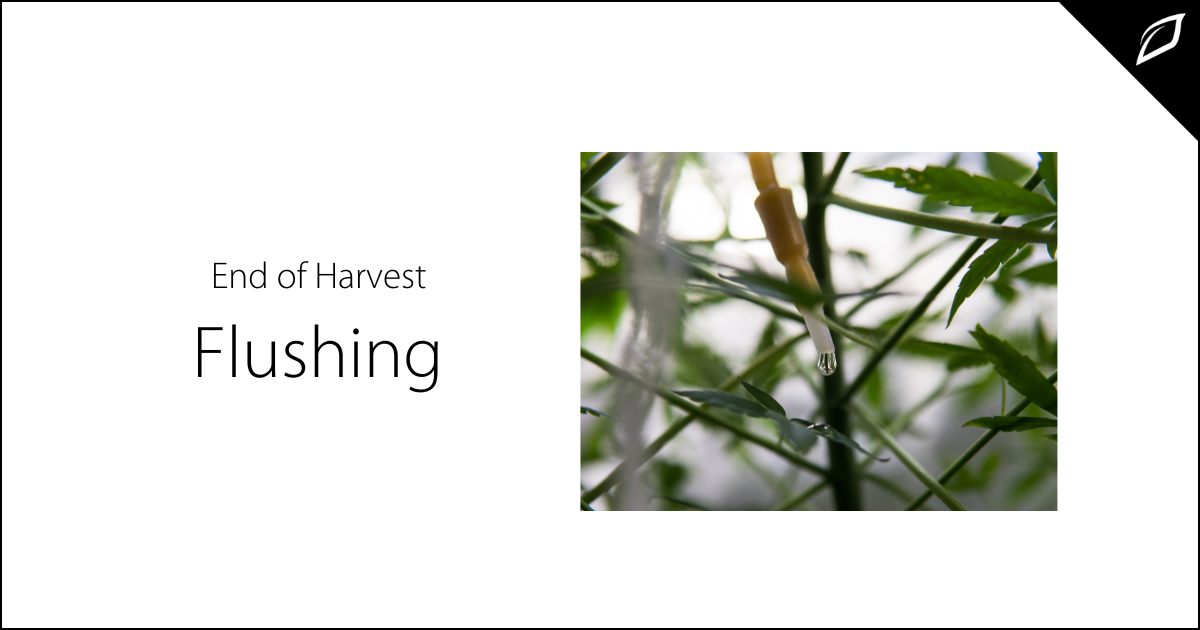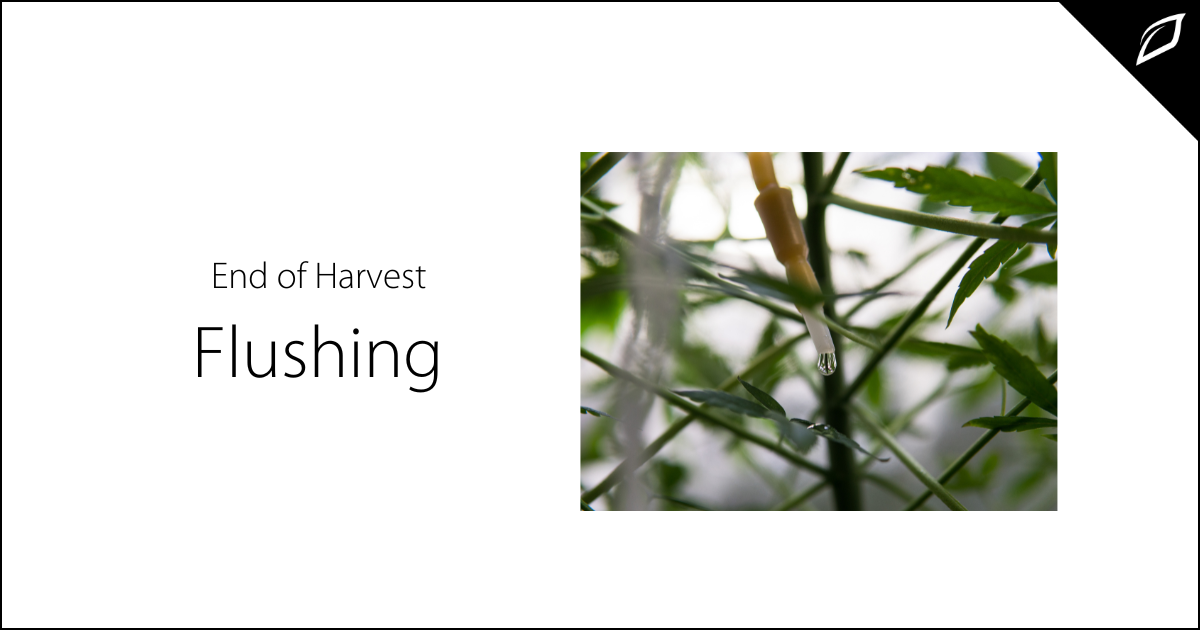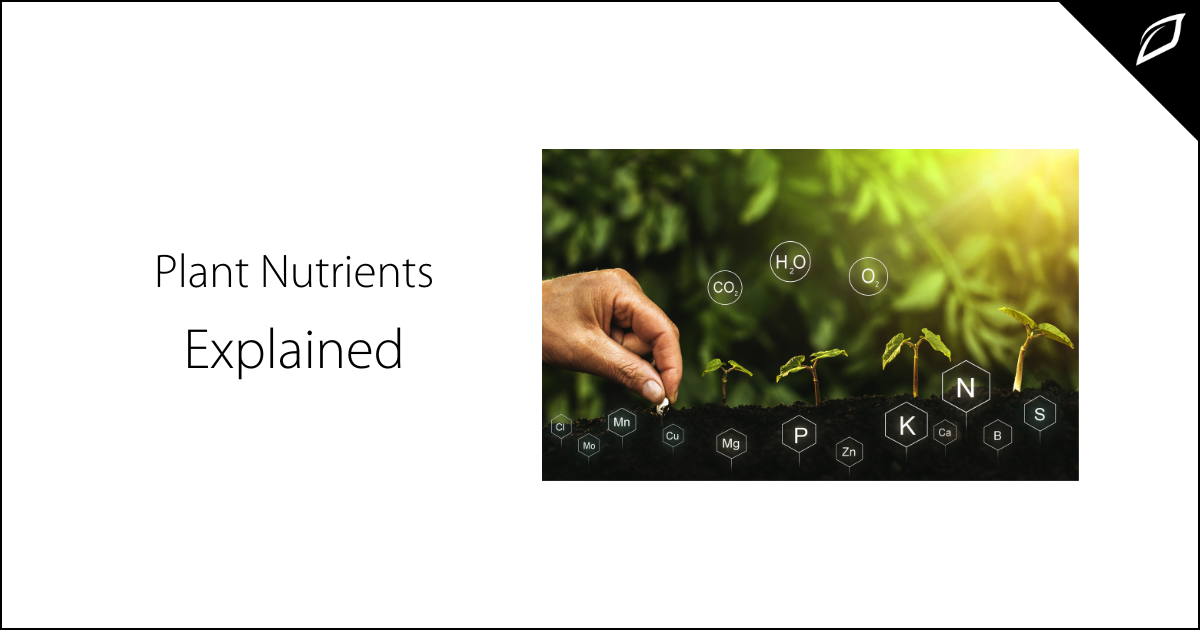Plant Nutrients Explained
While most nutrient manufacturers already go through the legwork of mixing properly balanced nutrient blends for your plants, it is important to...

Until a few years ago, flushing with pH'd water for the final weeks of flower was considered mandatory if you wanted smooth, flavorful cannabis that always burns white. As of recently, that sentiment is on the fence, with growers substituting this prolonged deprivation of nutrients for a more refined post-harvest curing process to achieve the same results. There have been several studies done on this matter which support modern changes.
The previous school of thought was simple. Deprive the plant of nutrients in the soil, forcing it to consume the excess stored nutrients within the plant, mainly nitrogen. Once it has been metabolized, nitrogen plays a major role in producing chlorophyll, which is known to give cannabis flower a grassy flavor. When found in excess, it can give users symptoms that mimic an allergy and even increase the likelihood of anxiety and headaches.
So, a better overall end product could be had by reducing the amount of chlorophyll in the plant upon harvest. This all makes sense in theory; however recent studies have been done that show very little difference in nutrient content found in cannabis that was flushed for 0, 7, and 14 days. In cannabis flushed for 14 days, nitrogen was only 6.7% lower than the zero-day flush treatment. The curing process' main function is cannabinoid conversion and chlorophyll breakdown. During this process, most of the chlorophyll left in the plant is broken down to give the user the best possible experience. Reducing nitrogen through flushing only aids in potentially speeding up this process; therefore, we must consider what is given up in exchange for this minor benefit.
There is no denying that starving the plant for an extended period of time can have some potentially unwanted side effects, such as reduced growth, nutrient deficiencies, and a weakened immune system. Since flushing occurs during the last stretch of cannabis' life cycle, the growth potential is definitely less than early to mid-flower; however, it is not unheard of for extra mass to be gained during this time. Starving plants during this time will most definitely prevent any extra mass from accumulating while also possibly introducing nutrient deficiencies which can affect the metabolic functions that would normally occur during this time and allow for proper ripening and a healthy immune system. Additionally, plants starved of calcium during these final weeks will often be more susceptible to fungal infections such as botrytis and powdery mildew, as the high calcium content helps to raise the pH of the plant, making it harder for these infections to establish themselves.
Rather than trying to pick between one extreme or the other, a middle ground may offer the best of both worlds. Many growers have found great results with feeding their normal balanced nutrient recipe, just at a reduced EC. Some will even change their calcium source during these final weeks from calcium nitrate to calcium chloride as it can help to lower nitrogen even further. Finding a middle ground can help avoid starvation's unwanted side effects while still achieving a lower overall nitrogen content so both you and your plants will be happy.


While most nutrient manufacturers already go through the legwork of mixing properly balanced nutrient blends for your plants, it is important to...
-png.png)
While it's a given that plants require several things to thrive, including light, there's relatively little information on how much light is too...
.png)
With the popularity of indoor cultivation, thanks mainly to cannabis growers, fertigation has become the gold standard in combining irrigation with...